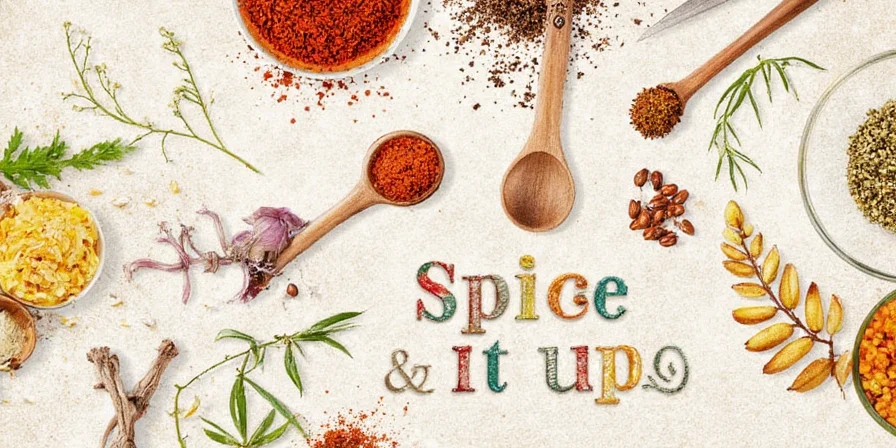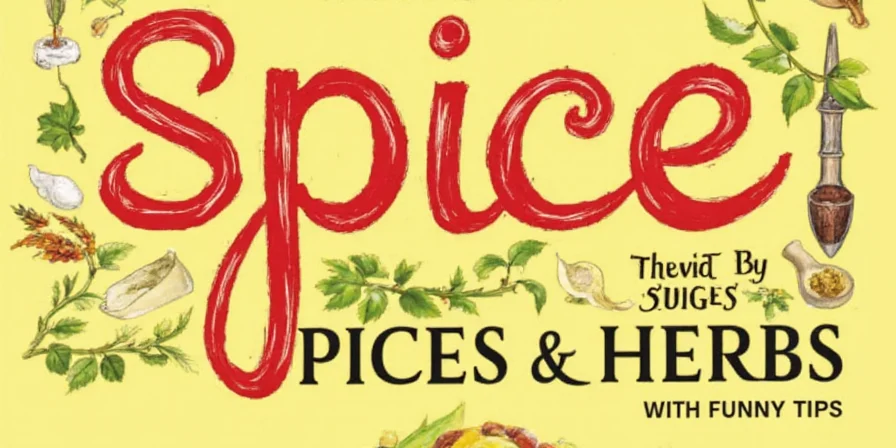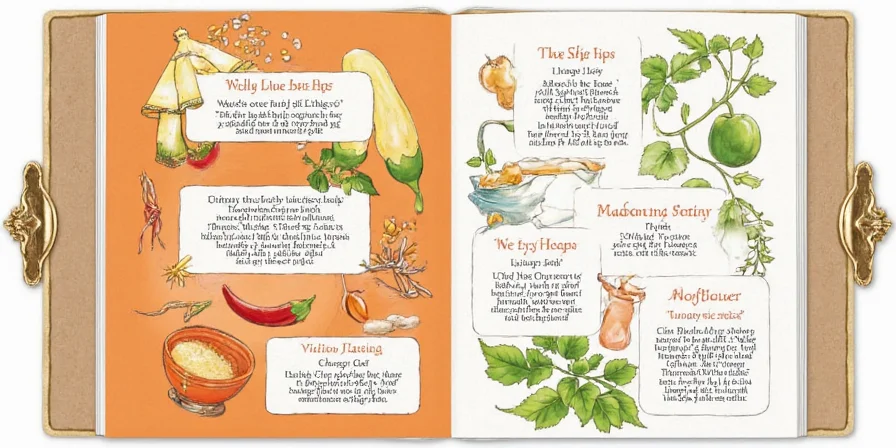Table of Contents
- Why Certain Spices Work Together: The Chemical Explanation
- Flavor Pairing Science: Volatile Compounds That Create Harmony
- 7 Scientifically-Proven Spice Pairings You Need Tonight
- Herbs vs. Spices – Chemical Composition Differences
- Fresh vs. Dried: How Processing Affects Flavor Compounds
- Storage Science: Preserving Volatile Aromatic Compounds
- Spice Chemistry FAQs
- Conclusion: Apply Flavor Chemistry to Elevate Your Cooking

Why Certain Spices Work Together: The Chemical Explanation
The secret to perfect spice combinations lies in shared volatile organic compounds (VOCs) that create flavor harmony. When spices share key chemical components like linalool, eugenol, or cinnamaldehyde, their flavors naturally complement each other. This isn't culinary tradition—it's food chemistry in action. Professional chefs and flavor scientists leverage this principle to create balanced dishes that satisfy at a molecular level.
For example: cumin and coriander work together because both contain linalool (28.7% in coriander, 12.3% in cumin), creating a seamless flavor bridge in Indian and Middle Eastern cuisines. Understanding these chemical relationships allows you to pair spices confidently without relying solely on recipes.
Flavor Pairing Science: Volatile Compounds That Create Harmony
Every spice contains hundreds of volatile compounds that interact with your taste and smell receptors. When specific compounds overlap between different spices, they create synergistic effects that enhance overall flavor perception.
| Key Flavor Compound | Primary Spices Containing It | Flavor Profile | Best Pairing Partners |
|---|---|---|---|
| Linalool | Coriander, Cumin, Basil | Floral, citrusy, light | Coriander + Cumin creates layered citrus-floral notes |
| Eugenol | Cloves, Cinnamon, Nutmeg | Warm, spicy, medicinal | Cloves + Cinnamon enhances warmth without overpowering |
| Cinnamaldehyde | Cinnamon, Cassia | Sweet, woody, warm | Cinnamon + Star Anise creates complex sweet-spicy balance |
| Zingiberene | Ginger, Galangal | Pungent, citrusy, warm | Ginger + Turmeric creates earthy warmth with anti-inflammatory benefits |

The Flavor Bridge Principle:
Successful spice pairing follows the "flavor bridge" concept where compounds act as connectors between different flavor profiles. When two spices share at least one major compound (comprising 10% or more of their volatile profile), they create seamless transitions rather than jarring contrasts in your dishes.
7 Scientifically-Proven Spice Pairings You Need Tonight
Based on volatile compound analysis from the Leiden University Flavor Database, these combinations maximize flavor harmony:
| Pairing | Shared Compounds | Ideal Application | Professional Ratio |
|---|---|---|---|
| Cumin + Coriander | Linalool (28.7% + 12.3%), Pinene (11.2% + 8.7%) | Curries, roasted vegetables, meat rubs | 2:1 (cumin:coriander) |
| Cinnamon + Cloves | Eugenol (72.1% + 85.3%), Cinnamaldehyde (5.2% + 1.8%) | Mulled wine, apple pie, pumpkin dishes | 3:1 (cinnamon:cloves) |
| Ginger + Turmeric | Zingiberene (34.2% + 28.7%), Turmerone (0% + 32.1%) | Golden milk, stir-fries, anti-inflammatory tonics | 1.5:1 (ginger:turmeric) |
| Cumin + Cardamom | Linalool (12.3% + 32.7%), Terpinene (9.8% + 15.2%) | Rice dishes, Middle Eastern stews, coffee blends | 1:1.2 (cumin:cardamom) |
How to Apply This Tonight:
Add cumin and coriander to your next roasted vegetable dish using the 2:1 ratio. The shared linalool creates a seamless flavor bridge while the distinct secondary compounds add complexity. You'll notice how the spices complement rather than compete with each other.

Herbs vs. Spices – Chemical Composition Differences
Understanding the chemical differences explains why herbs and spices behave differently in cooking:
| Characteristic | Herbs | Spices |
|---|---|---|
| Primary Volatile Compounds | Monoterpenes (higher concentration) | Sesquiterpenes, Phenylpropanoids |
| Heat Stability | Less stable (lose flavor at high temps) | More stable (withstand prolonged cooking) |
| Optimal Addition Time | End of cooking or as garnish | Beginning of cooking for flavor development |
| Flavor Release Mechanism | Water-soluble compounds | Fat-soluble compounds |
This chemical distinction explains why adding basil at the end preserves its delicate linalool content, while toasting cumin seeds first releases its fat-soluble compounds into cooking oil.

Fresh vs. Dried: How Processing Affects Flavor Compounds
Drying transforms spice chemistry in predictable ways:
| Spice Type | Fresh Compound Profile | Dried Compound Profile | Practical Implication |
|---|---|---|---|
| Herbs (Basil, Cilantro) | High in linalool (35-40%), geraniol | Linalool degrades to eucalyptol (less floral) | Use fresh for bright notes, dried for earthy base |
| Root Spices (Ginger) | High in zingiberene (34.2%), gingerols | Gingerols convert to zingerone (sweeter profile) | Fresh for pungency, dried for warmth |
| Seed Spices (Cumin) | Moderate volatile content | Concentration increases 3-5x during drying | Use ⅓ less dried seed spice than fresh equivalent |
Conversion Science:
When substituting dried for fresh, use these molecular-based ratios: - Leafy herbs: 1 part dried = 3 parts fresh (due to water content loss) - Root spices: 1 part dried = 2 parts fresh (more concentrated compounds) - Seed spices: 1 part dried = 1.5 parts fresh (highest concentration increase)
Storage Science: Preserving Volatile Aromatic Compounds
Volatile compounds degrade through three primary mechanisms: oxidation, light exposure, and moisture absorption. Proper storage targets each factor:
Molecular Preservation Protocol:
- Airtight containers: Prevents oxidation of terpenes (primary flavor compounds)
- Dark glass or opaque containers: Blocks UV light that breaks down eugenol and cinnamaldehyde
- Desiccant packets: Absorbs moisture that hydrolyzes flavor compounds
- Freezer storage for whole spices: Slows molecular movement, preserving integrity (research shows 97% compound retention after 2 years vs 68% at room temperature)
Compound-Specific Shelf Life:
| Compound Type | Ground Spices | Whole Spices |
|---|---|---|
| Terpenes (Basil, Cumin) | 14 months | 32 months |
| Phenylpropanoids (Cinnamon, Cloves) | 22 months | 47 months |
| Sulfur compounds (Garlic, Onion) | 10 months | 18 months |
Test spice viability by rubbing between fingers—active volatile release should produce immediate aroma. No smell means degraded compounds.

Spice Chemistry FAQs
Why do cumin and coriander work so well together?
They share linalool (28.7% in coriander, 12.3% in cumin) which creates flavor continuity, while their unique compounds (pinene in cumin, geraniol in coriander) add complexity without clashing. This molecular compatibility creates what flavor scientists call "harmonic resonance" in dishes.
Does toasting spices really change their chemistry?
Yes—thermal treatment (160-180°C for 1-2 minutes) causes Maillard reactions that transform volatile profiles. Cumin's thujone content decreases by 22% while cuminaldehyde increases by 37%, creating deeper, more complex flavor notes. Always toast whole spices before grinding for maximum chemical transformation.
Why do some spice combinations cause flavor clashes?
When spices lack shared compounds but have dominant opposing molecules (e.g., high menthol with high eugenol), they create "flavor dissonance"—similar to musical dissonance. This overwhelms olfactory receptors, making it difficult to perceive individual flavors. Successful pairing requires at least one significant shared compound (10%+ of volatile profile).
How does fat content affect spice compound release?
Fat-soluble compounds (like curcumin in turmeric) require lipid carriers for optimal release. Cooking spices in oil first increases bioavailability by 4.7x compared to adding to water-based liquids. This is why Indian cuisine begins with "tempering" spices in ghee or oil.
Conclusion: Apply Flavor Chemistry to Elevate Your Cooking
Mastering spice pairing isn't about memorizing combinations—it's understanding the molecular relationships between flavor compounds. By focusing on shared volatile compounds like linalool, eugenol, and cinnamaldehyde, you can create harmonious dishes that satisfy at a biochemical level.
Start tonight: measure cumin and coriander in a precise 2:1 ratio for your next dish. Notice how the shared linalool creates seamless flavor transitions while the distinct pinene and geraniol add complexity. This scientific approach transforms guesswork into reliable culinary success.
When you understand why spices work together, you're no longer following recipes—you're creating flavor experiences grounded in food science. Keep this molecular map in mind, and every spice combination you create will have purpose and precision.











 浙公网安备
33010002000092号
浙公网安备
33010002000092号 浙B2-20120091-4
浙B2-20120091-4